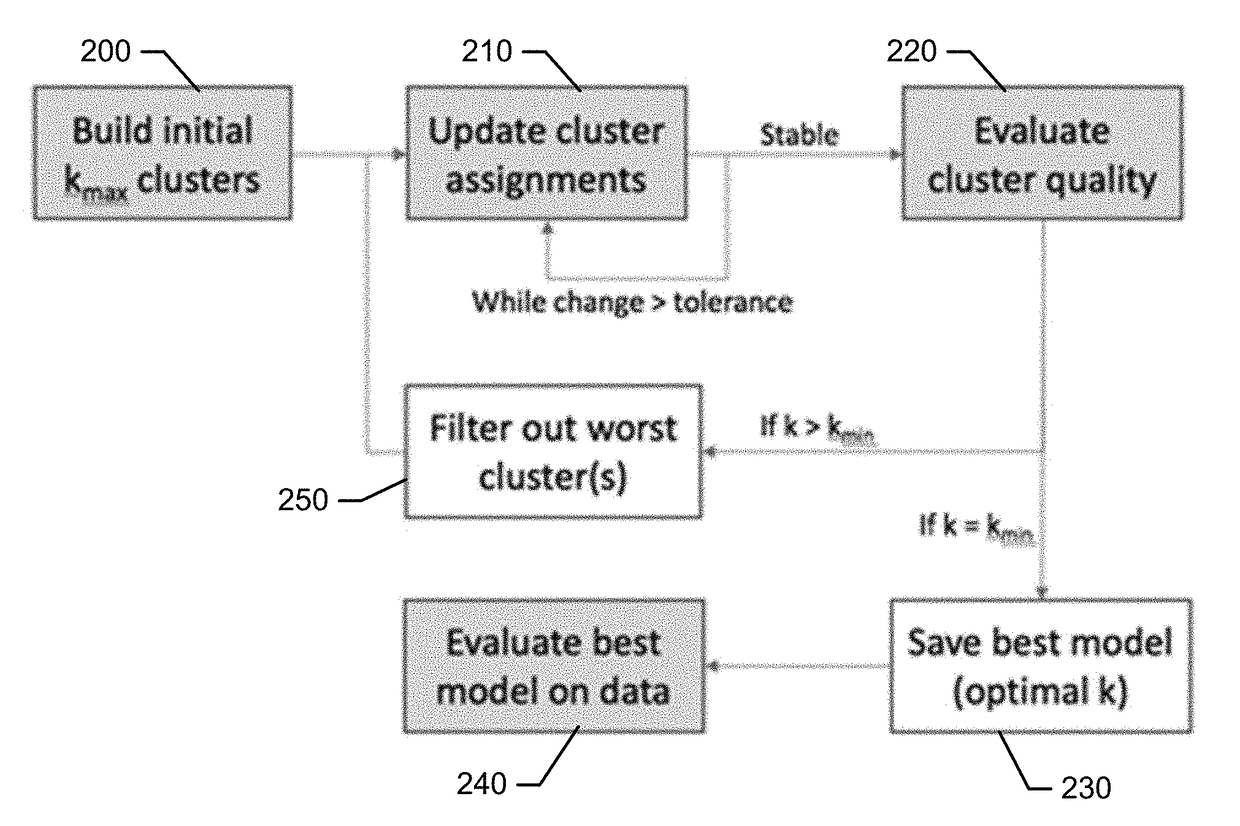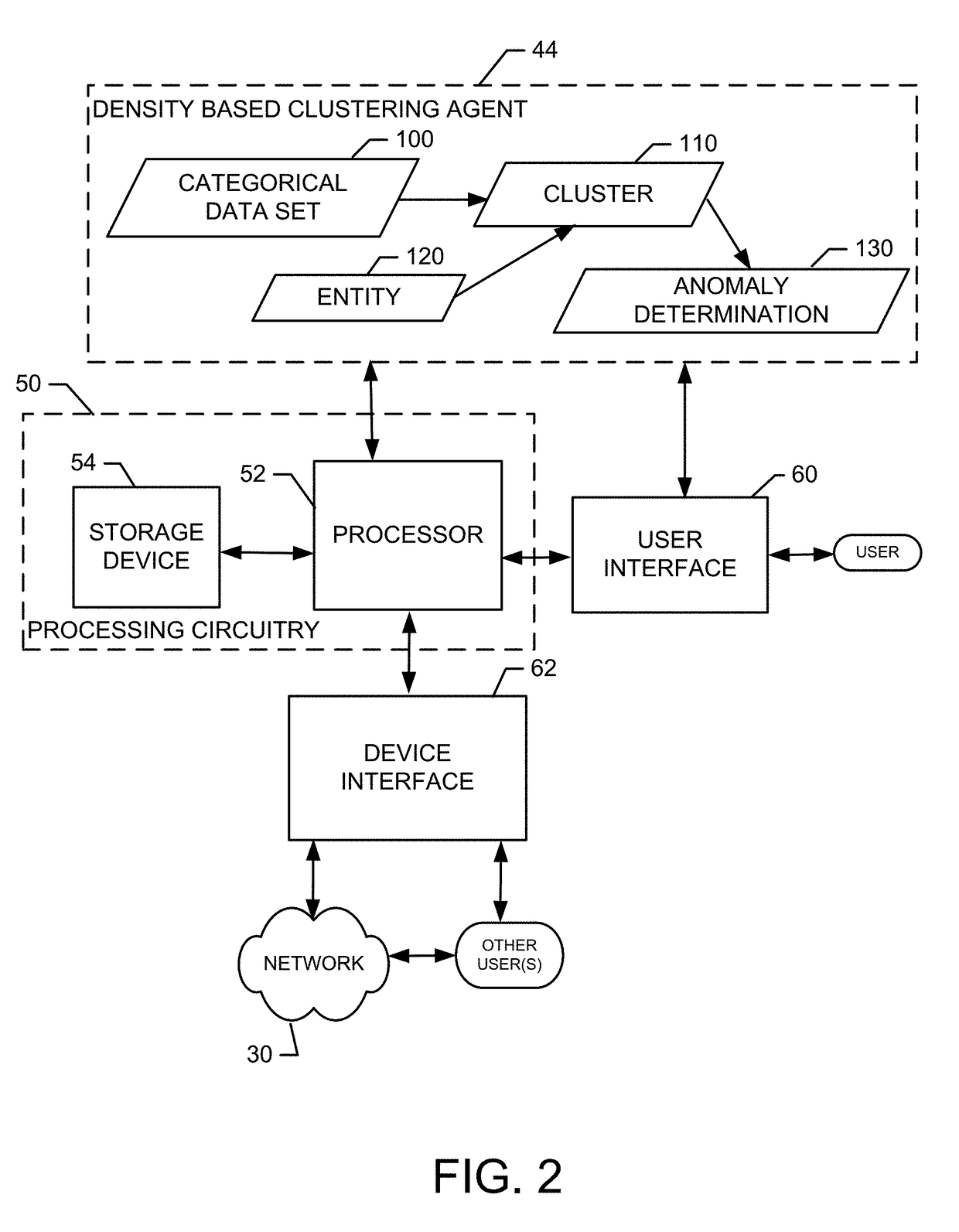Method and apparatus for clustering, analysis and classification of high dimensional data sets
a high-dimensional data and clustering technology, applied in the field of methods and apparatus for clustering, analysis and classification of high-dimensional data sets, can solve the problems of inability to use distance metrics, most of the data becomes equally anomalous, and the distance metrics become less and less useful
- Summary
- Abstract
- Description
- Claims
- Application Information
AI Technical Summary
Benefits of technology
Problems solved by technology
Method used
Image
Examples
Embodiment Construction
[0021]Some example embodiments now will be described more fully hereinafter with reference to the accompanying drawings, in which some, but not all example embodiments are shown. Indeed, the examples described and pictured herein should not be construed as being limiting as to the scope, applicability or configuration of the present disclosure. Rather, these example embodiments are provided so that this disclosure will satisfy applicable legal requirements. Like reference numerals refer to like elements throughout. As used herein, the term “entity” should be understood to correspond to a record (e.g., of an event, transaction, occurrence, activity, etc.), a product, a container, a person, an object, a living thing, a message, a connection, or any other thing that is characterized by a plurality of attributes as categorical data.
[0022]As indicated above, some example embodiments may relate to the provision of clustering, analysis and classification capabilities in challenging environ...
PUM
 Login to View More
Login to View More Abstract
Description
Claims
Application Information
 Login to View More
Login to View More - R&D
- Intellectual Property
- Life Sciences
- Materials
- Tech Scout
- Unparalleled Data Quality
- Higher Quality Content
- 60% Fewer Hallucinations
Browse by: Latest US Patents, China's latest patents, Technical Efficacy Thesaurus, Application Domain, Technology Topic, Popular Technical Reports.
© 2025 PatSnap. All rights reserved.Legal|Privacy policy|Modern Slavery Act Transparency Statement|Sitemap|About US| Contact US: help@patsnap.com



